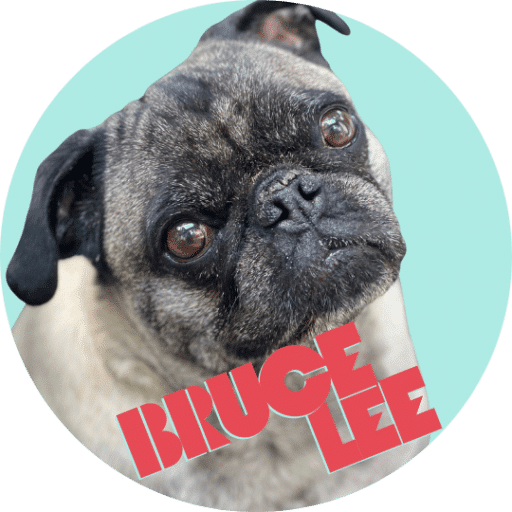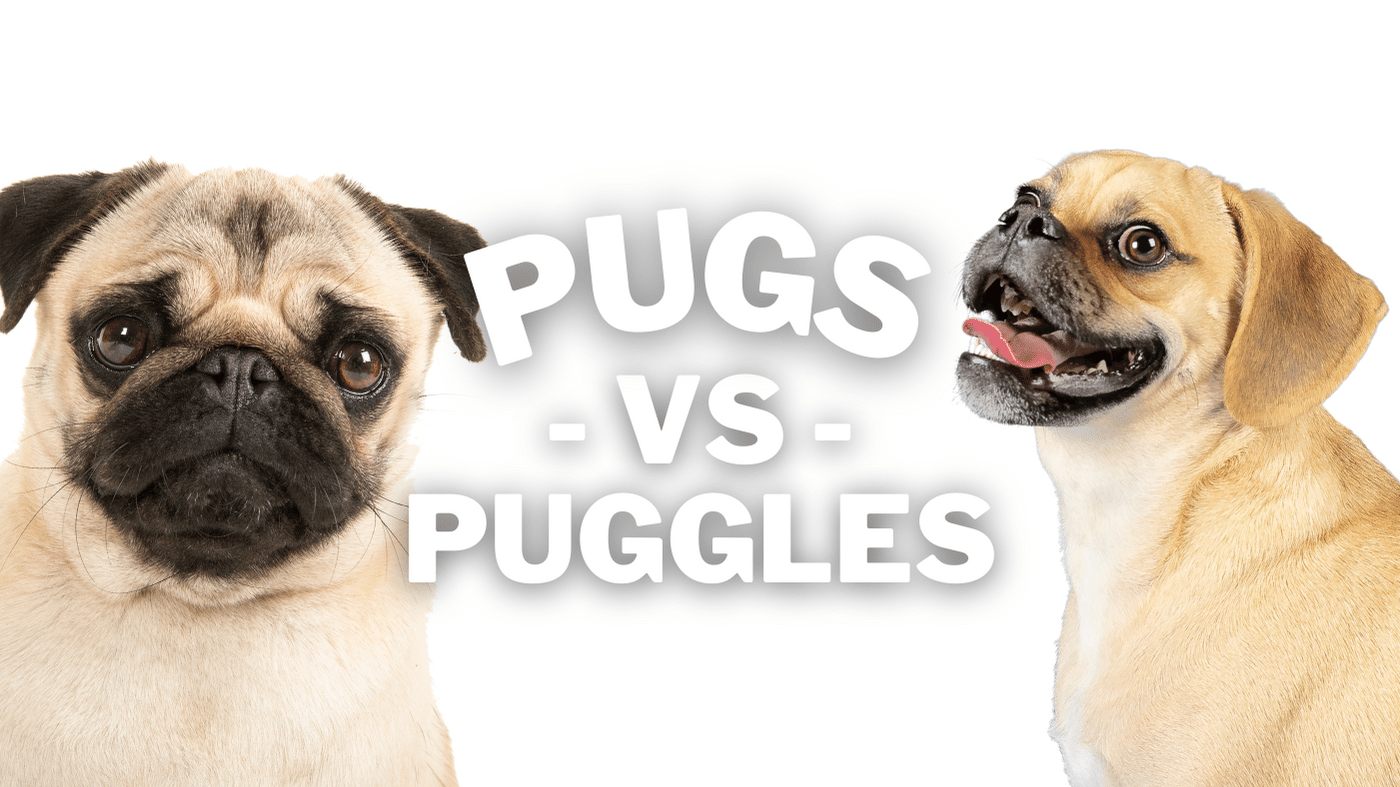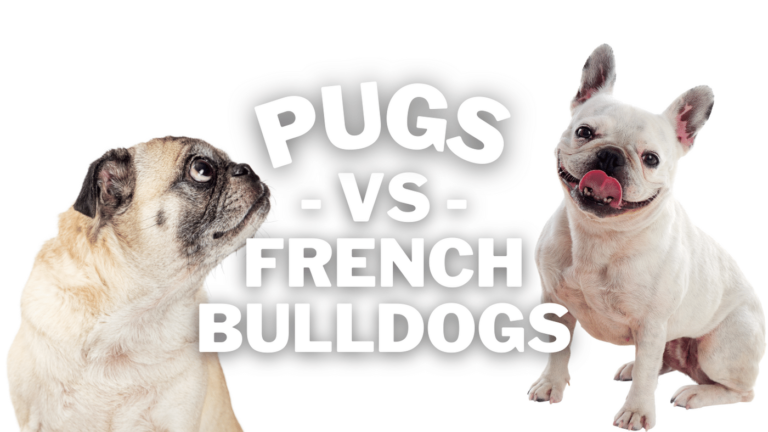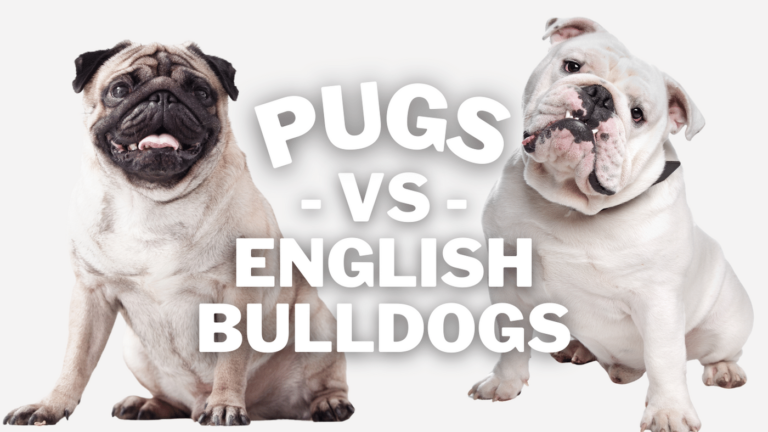Puggle vs Pug: A Comparison of Charming Characteristics
An Introduction of Puggle vs Pug
Puggles and Pugs, these charming canines, hold a special place in the hearts of dog lovers around the world. In this article, we’ll delve into the world of these lovable breeds, exploring what makes them unique and why they’ve captured the affection of dog enthusiasts.
Pugs, renowned for their distinctive appearance with short noses and legs, have long been a popular choice for those seeking a loyal and loving companion.
On the other hand, Puggles, a relatively newer addition to the canine world, are a delightful blend of Pug and Beagle genetics, offering their own set of endearing qualities.
As dog lovers, we’re often drawn to the smaller, more squish-faced members of the canine family, and Pugs and Puggles are no exception. Their adorable features and lovable personalities have earned them legions of devoted fans, which is why we’re here to explore the nuances of these two breeds.
Understanding the Popularity of Small, Squish-Faced Dogs
Why do we find ourselves irresistibly drawn to dogs with charming flat faces like Pugs and Puggles? These small, squish-faced dogs, often referred to as brachycephalic breeds, have a unique appeal that transcends generations.
Here’s what makes them so endearing:
- Their comically flat faces and expressive, soulful eyes create an immediate connection with dog enthusiasts. The wrinkles on their foreheads are like a canvas of personality, conveying an array of emotions.
- Their diminutive size makes them ideal for apartment living, fitting into our hearts and homes with ease.
- The endearing snorting and snuffling sounds they make when they breathe or play add to their charm. These sounds are like a symphony of affection to their owners.
- Their small stature and friendly disposition make them perfect lap dogs, ensuring they become an integral part of family life.
The Purpose of this Puggle vs Pug Comparison Article
The purpose of this article is not to advocate for one breed over the other but to help you make an informed decision.
Whether you’re already a proud Pug parent, considering bringing a Puggle into your life, or simply passionate about these adorable breeds, this article aims to provide you with a comprehensive understanding of their differences.
We’ll explore their historical roots, delve into their physical traits, examine potential health concerns, evaluate their temperament and energy levels, discuss grooming and care needs, and even uncover some famous Puggle owners.
By the end of this article, you’ll be better equipped to make an educated choice that aligns with your lifestyle and preferences.
So, let’s go on a journey to uncover the distinct qualities that define Puggles and Pugs, and ultimately, discover which of these charming, small, squish-faced dogs might be the best fit for you and your family.

History and Origin
The Ancestral Roots of the Pug
- Pugs have a history dating back over 2,000 years, with their origins in ancient China.
- They were cherished companions of Chinese emperors during the Shang Dynasty (around 1600 BC).
- Pugs made their way to Europe in the 16th century through Dutch traders, where they gained popularity among nobility, particularly in the Netherlands and England.
- The Pug’s distinctive appearance, characterized by its short nose and expressive eyes, has remained consistent over the centuries, reflecting its enduring appeal.
The Emergence of the Puggle as a Designer Breed
- Puggles are a modern creation, classified as a “designer dog” resulting from the crossbreeding of Pugs and Beagles.
- The Puggle’s story began in the United States in the 1980s when breeders aimed to combine the charming qualities of Pugs with the energy and playfulness of Beagles.
- The American Canine Hybrid Club (ACHC) officially recognized Puggles in 2004, but their popularity had already been on the rise prior to formal recognition.
- Puggles have swiftly become a sought-after choice among dog lovers, thanks to their unique blend of characteristics.
Significance of Parent Breeds
To understand Puggles fully, it’s essential to appreciate the significance of their parent breeds.
- Pugs, with their rich history in China and Europe, bring a legacy of companionship and charm, having been cherished as lap dogs and loyal family members for centuries.
- Beagles, known for their strong sense of smell and playful nature, contribute an active and energetic side to the Puggle’s personality.
By combining these two distinct breeds, Puggles inherit a unique set of traits, making them the lovable, active, and friendly dogs we know today.
Understanding the ancestry of Puggles and Pugs is essential for appreciating their differences and what they bring to the world of canine companionship.
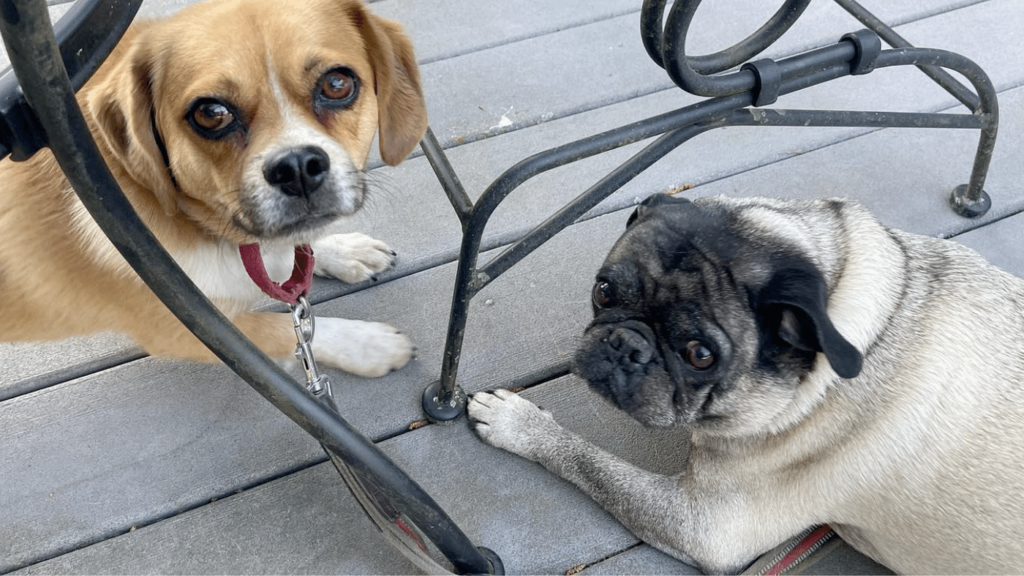
Physical Traits
The Pug: Short Nose, Short Legs, and Unique Appearance
- Short Nose and Wrinkled Forehead: Pugs are instantly recognizable by their flat, short noses and deeply wrinkled foreheads. These features give them a charming, almost comical, expression.
- Large, Expressive Eyes: Pugs have large, expressive eyes that seem to convey a wide range of emotions, adding to their endearing appearance.
- Compact Stature: Their short legs and stocky bodies contribute to their small and compact size, making them excellent lap dogs.
- Distinctive Coat: Pugs have smooth, short coats that come in various colors, including fawn and black. Their coat is easy to maintain with minimal grooming needs.
The Puggle: A Blend of Pug and Beagle Genetics
- Combination of Features: Puggles are the result of crossing Pugs and Beagles, creating a unique blend of physical traits. They typically inherit a shorter nose and wrinkles from the Pug side and a leaner body from the Beagle side.
- Moderate Size: Puggles are small to medium-sized dogs, falling between the size of Pugs and Beagles, which can make them a great fit for various living spaces.
- Ears and Tail: Puggles often have Beagle-like floppy ears and a curled tail, which adds to their distinctive appearance.
- Coat Variety: Their coat can vary, taking on the short and smooth characteristics of Pugs or the longer, denser coat of Beagles. Coat colors can range from fawn to black, much like Pugs.
Significant Differences in Physical Characteristics
- Nose Length: One of the most significant physical differences between Pugs and Puggles is the length of their noses. Pugs have notably shorter noses, which can lead to some of the respiratory issues common in brachycephalic breeds. Puggles, while having shorter noses compared to Beagles, tend to have longer snouts than Pugs, which can improve their breathing.
- Body Shape: Pugs have a more compact, barrel-shaped body with short legs, whereas Puggles inherit a leaner physique with slightly longer legs from their Beagle lineage.
- Eyes and Wrinkles: Pugs’ eyes are more prominent and expressive, while Puggles have a mix of characteristics from both parent breeds.
- Coat Length and Maintenance: Pugs have short, low-maintenance coats, while Puggles may have either short or longer coats, requiring different grooming needs.
Understanding these physical differences is crucial for potential dog owners. Depending on your lifestyle and preferences, you may be drawn to the unique appearance and characteristics of either the Pug or the Puggle.
The physical traits of these breeds play a significant role in how they fit into your life and your home, making it an important consideration when choosing the right companion.
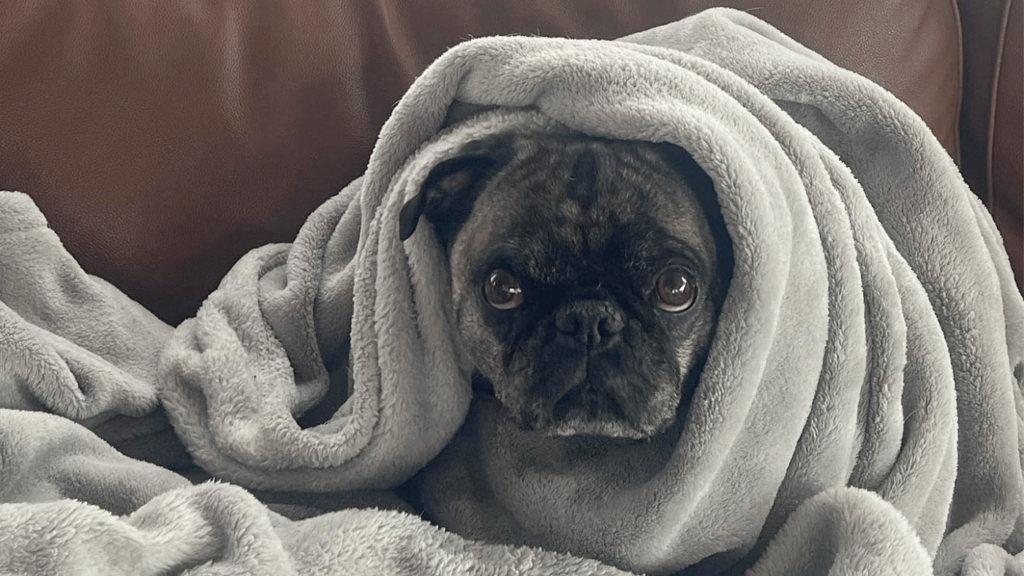
Health and Genetic Considerations
Breathing Problems in Brachycephalic Breeds
Pug’s Respiratory Problems
- Pugs are brachycephalic dogs, characterized by their flat faces and short noses. Unfortunately, these adorable traits can lead to respiratory issues.
- Brachycephalic obstructive airway syndrome (BOAS) is a common problem in Pugs. It can cause snoring, labored breathing, and increased vulnerability to overheating in hot weather.
- Pug owners should be prepared to provide extra care during strenuous activities or in extreme temperatures.
Puggle’s Respiratory Health
- Puggles inherit their short noses from Pugs, making them susceptible to respiratory issues similar to Pugs.
- However, because Puggles also have Beagle genetics, their snouts are slightly longer, which can mitigate some breathing problems when compared to Pugs.
- Puggle owners should still be cautious during intense exercise or hot weather and watch for signs of respiratory distress.
Common Health Issues in Pugs
Hip Dysplasia
- Hip dysplasia is a common concern in Pugs. It’s a genetic condition where the hip joint doesn’t develop properly, leading to arthritis and mobility issues.
- Regular vet check-ups and maintaining a healthy weight are essential for managing this condition in Pugs.
Patellar Luxation
- Patellar luxation, where the kneecap slips out of place, is another health issue that Pugs are prone to.
- Proper exercise and weight management are crucial to minimize the risk of this condition.
Cherry Eye
- Cherry eye is a condition in which the gland of the third eyelid becomes swollen and visible. Pugs are more susceptible to this condition due to their prominent eyes.
- Surgical intervention may be required to address cherry eye, emphasizing the importance of regular eye care for Pugs.
Health Risks Associated with Puggles
Beagle Genetics and Health Conditions
- Puggles inherit some of the health concerns common in Beagles, such as epilepsy, hip dysplasia, and allergies.
- Puggle owners should be aware of these potential health issues and work closely with their veterinarian to monitor and manage them.
Designer Breed Health Concerns
- As designer breeds, Puggles can have a wider range of genetic variability, which may increase the risk of health issues.
- It’s crucial to source your Puggle from a reputable breeder who conducts health testing to minimize these risks.
The Role of Reputable Breeders and Shelters
Whether you choose a Pug or a Puggle, selecting a reputable breeder is of utmost importance. Reputable breeders prioritize the health and well-being of their dogs, conducting health screenings and genetic testing to minimize the risk of inherited conditions.
Additionally, consider adopting from animal shelters and rescue organizations. Many Pugs and Puggles in need of loving homes can be found in shelters.
Your choice of breeder or adoption organization plays a vital role in the overall health and well-being of your chosen canine companion.
Understanding the potential health and genetic considerations of Pugs and Puggles is essential for any responsible dog owner. Being aware of these factors helps you provide the best possible care for your furry friend and ensures they lead happy, healthy lives.
This knowledge will also help you make an informed choice when deciding between these two delightful breeds.
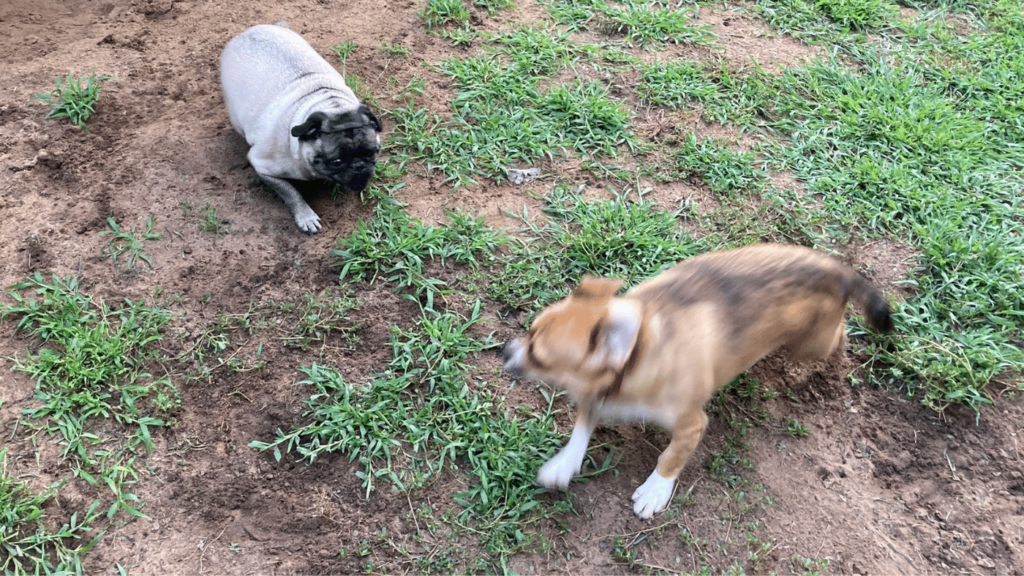
Temperament and Energy Level
Pugs as Loving and Easy-Going Dogs
- Loyal Companions: Pugs have earned a reputation as loyal and devoted companions. They often form strong bonds with their owners and are known for their affectionate nature.
- Easy-Going Disposition: Pugs tend to be laid-back and easy-going, making them ideal for families, single individuals, or seniors looking for a loyal, low-energy friend.
- Good Watchdogs: While they may not be guard dogs, Pugs are excellent at alerting their owners to strangers, adding a layer of security to your home.
Puggles’ High Energy and Friendly Disposition
- High Energy Levels: Puggles inherit the Beagle’s love for outdoor adventures and play. They’re often described as energetic and active, making them a great fit for families who enjoy an active lifestyle.
- Playful and Friendly: Puggles tend to be outgoing, friendly, and sociable. Their enthusiasm for play and interaction with both humans and other dogs makes them a joyful addition to a household.
- Good Family Dogs: Puggles are known for their compatibility with families, especially those with children. Their friendly disposition and energy level can match the enthusiasm of young ones.
Compatibility with Different Lifestyles
- Lap Dogs vs. Playful Companions: Pugs are content to be lap dogs and are perfect for individuals or families looking for a calm, relaxed companion. Puggles, with their high energy levels, suit more active lifestyles and enjoy playtime and outdoor activities.
- Living Space Considerations: Pugs, due to their small size and easy-going nature, are well-suited for apartment living. Puggles also adapt well to smaller spaces but require more exercise to stay happy.
- Families and Singles: Pugs are versatile and can adapt to various living situations, making them a great choice for both families and singles. Puggles, with their friendly and active temperament, are a fantastic choice for households with children.
Choosing between a Pug and a Puggle is not only about their appearance but also about their compatibility with your lifestyle and preferences. Pugs offer a more relaxed, loving companionship, while Puggles bring an active and playful dynamic to your life.
Consider your daily routine, energy level, and living space when making this decision, and you’ll find the perfect four-legged friend to share your life with.

Exercise and Mental Stimulation
Pug’s Lower Exercise Needs
- Moderate Activity Level: Pugs are not high-energy dogs and have more modest exercise requirements. They are content with short walks and playtime in the house or yard.
- Preference for Cuddles: Pugs often enjoy being close to their human companions, making them suitable for individuals who prefer a more laid-back lifestyle.
- Mental Stimulation: While they don’t need as much physical exercise, Pugs benefit from mental stimulation, such as puzzle toys or interactive games to keep their minds engaged.
Puggle’s Need for Physical and Mental Stimulation
- High Energy Demands: Puggles inherit the Beagle’s spirited nature and need regular exercise to stay happy. They thrive on activities like long walks, interactive play, and even agility training.
- Mental Stimulation: Puggles are known for their intelligence, and mental stimulation is equally important. Puzzle toys, obedience training, and interactive games help keep their minds sharp and prevent boredom.
- Challenges of Boredom: If Puggles don’t receive enough exercise and mental engagement, they can become restless and may engage in destructive behaviors.
Finding the Best Way to Meet Exercise Requirements
- Personal Routine: Consider your daily routine and energy level when choosing between a Pug and a Puggle. Pugs are a better fit for those who enjoy a more relaxed pace, while Puggles suit active individuals or families.
- Playtime and Interaction: Pugs enjoy shorter, less intense play sessions and are content with gentle activities. Puggles, on the other hand, need more active play and interaction to burn off energy.
- Outdoor Adventures: Puggles thrive on outdoor adventures, such as hiking, running, and visits to the dog park. Pugs prefer leisurely strolls and lounging indoors.
Balancing exercise and mental stimulation is vital for the overall well-being of your dog, regardless of whether you choose a Pug or a Puggle. Tailoring their activities to suit their individual needs is essential to ensure a happy and healthy life.
By understanding the exercise requirements of each breed, you can better meet the needs of your furry friend and create a rewarding and fulfilling companionship.
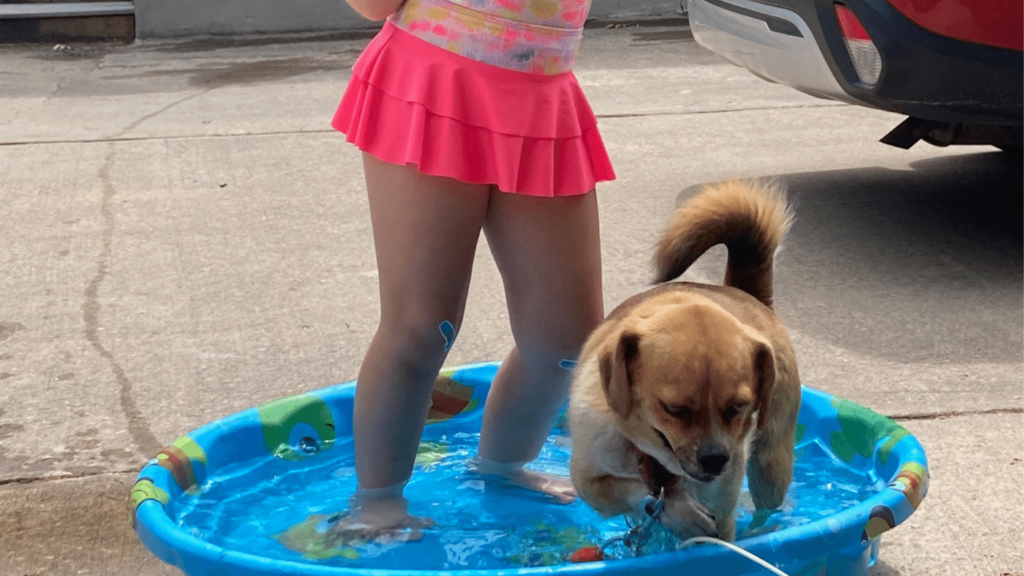
Family Compatibility
Pugs as Lap Dogs and Great Family Pets
- Lap Dogs: Pugs are often described as ultimate lap dogs, loving to snuggle and provide comfort. They enjoy being close to their human family members, making them ideal for those who want an affectionate companion.
- Good with Children: Pugs are known for their gentle and patient nature, which makes them great family pets. They tend to get along well with children and often form strong bonds with them.
- Suitable for Smaller Spaces: Pugs’ small size and easy-going temperament make them well-suited for apartment living and families with limited space.
Puggles as Active Dogs and Their Interaction with Children
- Active and Playful: Puggles bring an active and playful dynamic to a family. Their energy and enthusiasm for playtime can match the enthusiasm of children, creating a lively atmosphere.
- Interactive Play: Puggles thrive on interactive play, and they enjoy activities like fetch and running around in the yard. Their high energy levels make them ideal playmates for kids.
- Supervision: While Puggles can be great with children, especially when properly socialized, it’s essential to supervise interactions to ensure safety and positive experiences for both the dog and the child.
Choosing the Right Companion for Your Family
- Lifestyle Considerations: Consider your family’s lifestyle and energy levels. If you prefer a more relaxed pace and have limited space, a Pug might be the better fit. If you have an active family and enjoy outdoor activities, a Puggle’s energy might complement your lifestyle.
- Children’s Ages: Think about the ages of your children. Pugs’ easy-going nature makes them suitable for families with younger kids. Puggles, with their playfulness, can be great companions for families with older, more active children.
- Training and Socialization: Whichever breed you choose, investing time in training and socialization is crucial. Both Pugs and Puggles benefit from positive reinforcement and proper introductions to family members and other pets.
Choosing the right canine companion for your family is a significant decision, and it’s essential to align the breed’s characteristics with your family’s lifestyle and preferences.
Whether you opt for a Pug’s loving and easy-going nature or a Puggle’s active and playful disposition, both breeds can be wonderful additions to a loving family home.
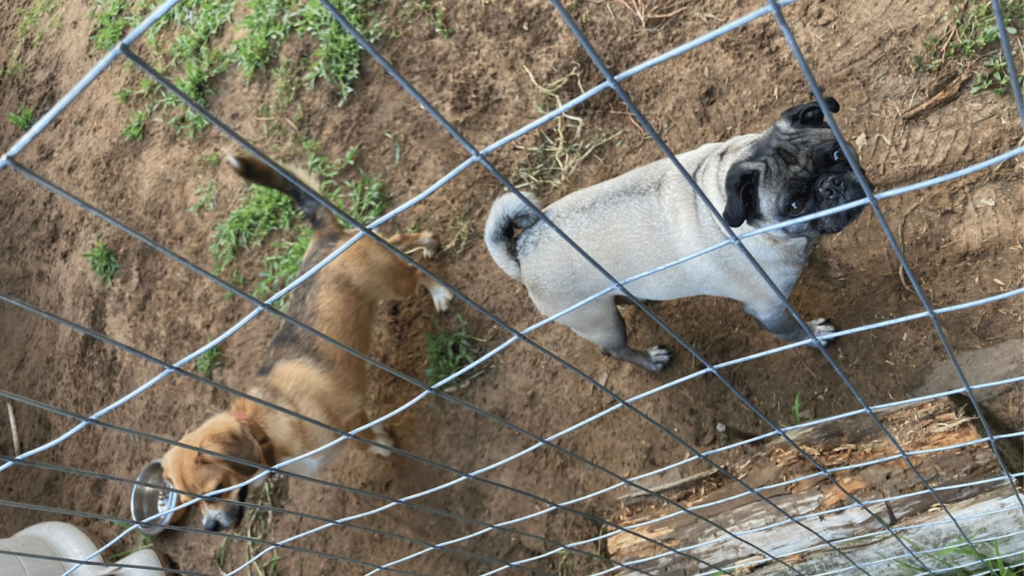
Grooming and Care
Pug’s Short Coats and Minimal Grooming Needs
- Short, Smooth Coats: Pugs have short, smooth coats that are relatively low-maintenance. Their coats typically come in fawn or black, which are easy to care for.
- Minimal Shedding: While Pugs do shed, it’s not excessive, and regular brushing can help manage loose hair.
- Skin Care: Pugs are prone to skin problems, so it’s important to keep their wrinkles clean and dry. Regularly inspect and clean these areas to prevent skin irritations.
Puggle’s Regular Brushing and Special Care Considerations
- Coat Variability: Puggles can have short, smooth coats resembling Pugs or longer, denser coats reminiscent of Beagles. The grooming needs may vary based on coat length.
- Regular Brushing: Regardless of coat length, Puggles benefit from regular brushing to manage shedding, prevent matting, and distribute skin oils.
- Ear Care: Puggles with floppy Beagle-like ears may be prone to ear infections. Regularly check and clean their ears to prevent issues.
Grooming Tips for Both Breeds
- Weekly Brushing: Both Pugs and Puggles benefit from weekly brushing to maintain healthy coats and reduce shedding.
- Bathing: Bathing should be done on an as-needed basis. Be cautious not to over-bathe, as it can strip the skin of natural oils.
- Dental Care: Dental hygiene is crucial for both breeds. Regular teeth brushing, dental chews, and check-ups with the veterinarian are essential for maintaining good oral health.
- Wrinkle Care: Pugs require special attention to their facial wrinkles. Clean and dry these areas regularly to prevent skin issues.
- Nail Trimming: Keep an eye on nail length and trim them as needed to prevent discomfort and maintain healthy foot structure.
Grooming and care play a significant role in the health and well-being of your Pug or Puggle. By understanding their unique needs and following a consistent grooming routine, you can ensure that your canine companion looks and feels their best.
Whether you prefer the lower-maintenance grooming of a Pug or are ready to invest more time in the regular care of a Puggle, the reward of a happy and healthy pet is well worth the effort.

Famous Puggle Owners and Their Stories
- Sylvester Stallone’s Puggle: The famous actor Sylvester Stallone is a proud owner of a Puggle.
- Keanu Reeves: Hollywood actor Keanu Reeves is another notable celebrity who has owned a Puggle. His Puggle companion is known for its charming and affectionate nature.
- Jake Gyllenhaal: Actor Jake Gyllenhaal is also a Puggle owner. His Puggle is often seen joining him on outdoor adventures, reflecting the breed’s energetic nature.
- Puggle Popularity: The Puggle’s popularity has extended beyond the homes of celebrities. Their unique blend of Pug and Beagle characteristics has made them a sought-after choice for dog enthusiasts worldwide.
These celebrity stories offer a glimpse into the world of Puggles and the profound connections that can be formed with these charming and lively dogs.
Whether you’re a fan of Sylvester Stallone or curious about other celebrities who have fallen in love with Puggles, it’s evident that these dogs bring joy and companionship to people from all walks of life.
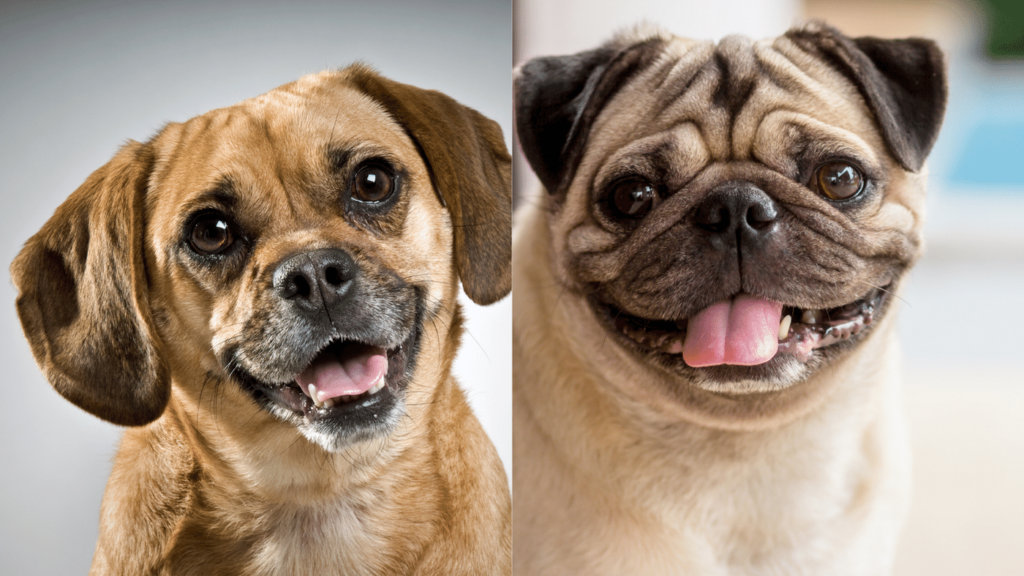
Puggle vs Pug Conclusion
Summarizing the Key Differences
- Breeds with Unique Histories: Pugs and Puggles come from distinct backgrounds, with Pugs tracing their history back thousands of years to China, while Puggles are modern designer breeds.
- Physical Characteristics: Pugs are characterized by their short noses, short legs, and distinctive appearance, while Puggles blend Pug and Beagle genetics, resulting in a more variable appearance.
- Health Considerations: Pugs are prone to brachycephalic respiratory issues and specific health concerns like hip dysplasia and patellar luxation. Puggles inherit some of these risks and may also have Beagle-related health conditions.
- Temperament and Energy Levels: Pugs are known for their loving, easy-going disposition, making them great companions for families, singles, and seniors. Puggles, with their high energy and friendliness, are a fantastic match for active individuals and families with older children.
- Grooming Needs: Pugs have short, low-maintenance coats, while Puggles may have varying coat lengths, requiring more regular brushing.
- Famous Owners: Celebrities like Sylvester Stallone and Keanu Reeves have showcased their love for Puggles, highlighting their appeal in the world of canine companions.
Finding the Best Fit for Your Lifestyle
- Personal Preferences: Consider your daily routine, energy level, and space when choosing between a Pug and a Puggle. Your lifestyle plays a crucial role in determining the ideal breed for you.
- Family Considerations: The age of your children and their activity level should also influence your decision. Pugs are great for families with younger kids, while Puggles can be more suitable for families with older, active children.
- Training and Socialization: Regardless of your choice, both breeds benefit from positive reinforcement training and early socialization.
- Grooming Commitment: Think about your willingness to commit to grooming routines, whether you prefer the lower-maintenance needs of a Pug or the regular care required for a Puggle’s coat.
The Beauty of Canine Diversity: Puggle vs Pug
- Diverse Companions: The world of canine companionship is wonderfully diverse, offering breeds like Pugs and Puggles, each with their unique charm and characteristics.
- Loving and Lively: Whether you choose a Pug’s loving and easy-going nature or a Puggle’s active and playful disposition, both breeds have the potential to bring joy and companionship to your life.
- A Lifetime of Memories: The choice between a Pug and a Puggle is the beginning of a beautiful journey filled with memories, love, and the unique bond between you and your four-legged friend.
As a dog enthusiast, you’re well on your way to making an informed decision, and whether you opt for a Pug or a Puggle, your life is bound to be enriched by the delightful presence of your new canine companion.
The world of dogs, with all its diversity, offers a perfect match for every dog lover.
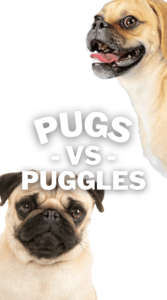
Additional Resources
- The American Kennel Club (AKC): The official website of the American Kennel Club provides comprehensive information on various dog breeds, breed standards, and responsible breeding practices. Visit the AKC
Read More Articles Like This:
- Pugs vs. English Bulldogs: Explore the similarities and differences between two beloved brachycephalic breeds, Pugs and English Bulldogs, in our in-depth comparison article. [Link to Article]
- Pugs vs. French Bulldogs: Delve into the characteristics and traits that distinguish Pugs from French Bulldogs in our comparative guide. [Link to Article]
These additional resources will further assist you in making informed decisions about choosing the right dog breed for your lifestyle and preferences.
